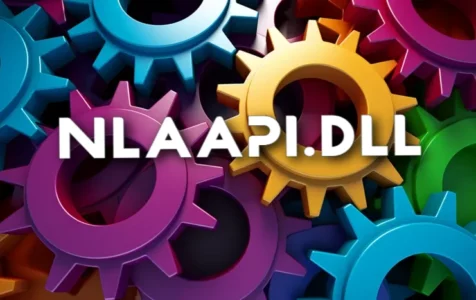Dynamic Link Libraries (DLLs) are fundamental components of the Windows operating system. They contain sets of instructions that software applications can call upon to do certain things without having to write them from scratch. One such file is nlaapi.dll, associated with Windows Network Location Awareness (NLA) service which plays a crucial role in your computer’s networking capabilities.
The Network Location Awareness (NLA) service helps Windows recognize networks that it connects to and adapt its settings accordingly. For instance, the firewall settings might change based on whether you’re connected to a public Wi-Fi at a coffee shop or your secure home network. The nlaapi.dll file is an integral part of this service, and its primary function is to support the operation of NLA.
When encountering a nlaapi.dll error message, it can lead to confusion and concern, as DLL files are commonly associated with errors or malware infections. However, not all DLL files are harmful, and nlaapi.dll is typically a safe and essential system file that should not be removed or disabled.
Is Nlaapi.dll Safe to Run? Could It Be a Virus or Malware?
The nlaapi.dll file that is digitally signed by Microsoft should generally be considered safe as long as it’s located in the System32 folder of your Windows installation (typically C:\Windows\System32). However, it’s not uncommon for malware to disguise itself as a legitimate DLL file, which may lead to security issues on your PC. It’s advisable to run an antivirus scan if you notice an unexpected DLL error message or if the file is found outside the System32 folder.
Expert Tip: For smoother PC performance, consider using a PC optimization tool. It handles junk files, incorrect settings, and harmful apps. Make sure it's right for your system, and always check the EULA and Privacy Policy.
Special offer. About Outbyte, uninstall instructions, EULA, Privacy Policy.
How to Fix Nlaapi.dll Related Issues
To address issues with nlaapi.dll, you can follow these steps:
- Run a virus scan: Use a reliable antivirus software to check for and remove any potential threats.
- System File Checker (SFC) Scan: This tool can fix corrupted or missing system files. To use SFC, open Command Prompt as an administrator and enter the command
sfc /scannow. - Check your system for updates: Ensure that your Windows OS is up-to-date with the latest patches and updates.
- Install the file manually: You can download nlaapi.dll from a reliable source and replace the missing or corrupted one. After downloading, you might need to register the file using the Command Prompt with the command
regsvr32 nlaapi.dll. - Perform a System Restore: If the problem started after a recent change, use System Restore to revert your system back to a previous state.
- Clean Boot: Start your PC with a minimal set of drivers and startup programs to determine if background software is causing the error.
For advanced troubleshooting, you could use professional tools said to offer additional benefits, like backup and restore options for your registry, though they may come at a cost. Additionally, helpful information on fixing errors may be found on community forums such as Microsoft’s official forum, or other tech forums where users share their experiences and solutions.
If these steps seem daunting, you may want to seek professional assistance. Remember, when dealing with system files, it’s crucial to follow instructions precisely to prevent further system issues.
Community Discussions and Experiences
Microsoft’s community forum and other tech discussion boards are valuable resources for troubleshooting common DLL issues. Many users share their struggles and solutions regarding DLL issues, including nlaapi.dll. For example, fellow Windows users might suggest system scans, detailed methods for safely obtaining and replacing DLL files, and anecdotes of issues caused by malware disguised as DLLs.
In conclusion, nlaapi.dll is a legitimate Windows system file that plays a vital role in your computer’s network identification and configuration. While the file itself is not harmful, it can sometimes be falsely targeted by malware. In such cases, following the above-mentioned troubleshooting steps should help you resolve any issues related to nlaapi.dll.
